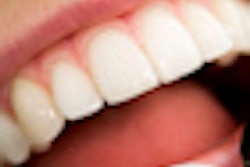
Research has shown that infection and inflammation play a role in 15% to 20% of all cancers, and that "highly prevalent" oral diseases are "significantly linked" to some types of cancer. But a literature review in Oral Diseases (accepted for publication July 4, 2011) found that evidence remains weak and that further studies are needed before cancer can be added to the list of diseases caused by oral infections.
Inflammation has been linked to the development of cancer, and infections that trigger inflammatory processes have been proposed as major preventable causes of cancer, wrote the study authors from the University of Helsinki in Finland and Complutense University of Madrid.
Oral infections may trigger malignant transformations in tissues of the oral cavity and other organs, they noted.
"Poor oral hygiene is associated with oral cancer, but there is also evidence of a possible link between oral or dental infections and malignancies in general," the authors wrote.
However, the diversity of oral microbiota makes it difficult to determine whether specific oral microbial species are directly linked to systemic diseases such as cancer (Oral Diseases, March 2010, Vol. 16:2, pp. 136-145).
10-year literature review
To illustrate the nature, variety, and frequency of oral diseases and their possible link to cancer, the researchers conducted a literature review on PubMed, focusing on publications from 2000 to 2010. Among their findings:
Researchers have explored the association between periodontal disease and cancer risk, and a study among male health professionals in the U.S. found that periodontal disease is associated with a small but significant increase in overall cancer risk, which persisted in those who never smoked (Lancet Oncology, June 2008, Vol. 9:6, pp. 550-558).
Cigarette smoking and alcohol consumption increase the risk of oral cancer, and studies show that 25% of oral cancers worldwide are attributed to smoking and/or chewing tobacco, 7% to 19% to alcohol consumption, 10% to 15% to micronutrient deficiency, and more than 50% to betel quid chewing in areas where it is commonly used (Oral Oncology, April 2009, Vol. 45:4, pp. 340-350).
Numerous studies have also established that human papillomavirus (HPV) type-16 infection is as a risk factor for oral cancer, the researchers noted. "However, the participation of HPV in the etiology of oral cancer remains controversial, and reports on its prevalence in oral cancerous tissue have ranged extremely widely from 0% to 100% over the past 20 years," they wrote.
Other studies have shown that periodontal disease increases the risk of head and neck cancer, and that those with periodontitis are also more likely to develop poorly differentiated oral squamous cell carcinomas (Cancer Epidemiology, Biomarkers & Prevention, September 2009, Vol. 18:9, pp. 2406-2412). However, "It is interesting that malignancies in the periodontal tissue seem rare," the authors wrote.
Candida is more prevalent on carcinoma lesions than on healthy mouth mucosas (Oral Oncology, July 1998, Vol. 34:4, pp. 304-308), and non-albicans Candida has been found in an increasing number of oral carcinoma patients (Oral Microbiology and Immunology, April 2002, Vol. 17:2, pp. 79-84), the authors noted.
While some epidemiological data indicate an association between oral disease and malignant transformation, no causal relationship has been established, the study authors concluded.
"It can, however, be assumed that general inflammatory mechanisms linked to carcinogenesis also play a role in the oral cavity, where numerous resident micro-organisms trigger harmful cell and tissue reactions," they added.
Further research is required to explore whether the likelihood of cancer could be reduced by good oral hygiene and/or modification of the oral biofilm composition, the researchers concluded.



















